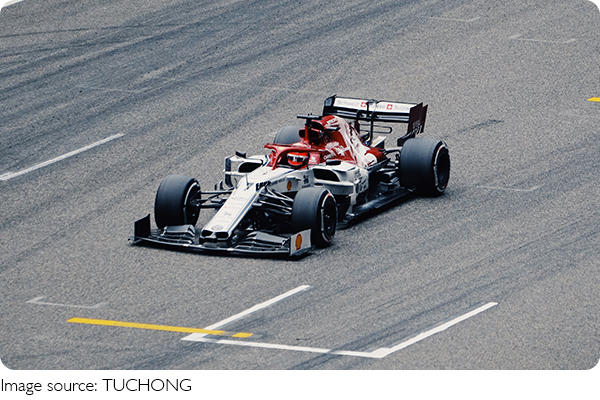Driven By Speed

Hey Lykkers, have you ever felt the thrill just from hearing the roar of an F1 engine on TV? Imagine being trackside as the world’s fastest drivers battle it out at over 220 mph—Formula One is not just a sport, it’s pure adrenaline.
We’re diving into why F1 captures the hearts of millions around the world and what makes it so unforgettable.
What Exactly Is Formula One?
Formula One, or F1, is the top level of international racing for open-wheel, single-seater cars. Organized by the FIA (Fédération Internationale de l’Automobile), the first official F1 World Championship started back in 1950. The name "Formula" refers to a strict set of technical and sporting rules every team and driver must follow.
Every year, around 20 drivers from 10 different teams compete in a series of races called Grand Prix, held across various countries—from Monaco’s tight street corners to the high-speed straights of Italy’s Monza.

How Fast Are We Talking?
Hold on tight—F1 cars can exceed 350 km/h (about 217 mph). Thanks to cutting-edge aerodynamics, they can take corners at mind-bending speeds while generating up to 5G of lateral force—yes, 5 times the force of gravity. And under the hood? A hybrid engine that revs up to 15,000 rpm, which is way faster than any normal car. It’s not just about speed, though; it's precision, balance, and lightning-fast reflexes.
It’s All About Teamwork
We often see the driver on the podium, but F1 is a team sport at its core. Each car is the result of thousands of hours of work from engineers, designers, and mechanics. During a race, even a 2-second delay in a pit stop can cost the team a win. Behind every race weekend are massive strategy sessions, real-time weather monitoring, and data analysis that looks more like a tech lab than a garage.
F1’s Global Stage
The races span the globe—from the night lights of Singapore to the heat of the Bahrain desert, and the historic circuits of Europe. While the sport started in Europe, today, it’s loved worldwide. Countries across Asia, the Americas, and the Middle East all host Grand Prix events, drawing huge crowds and global attention.
Money, Tech, and the Future
Let’s not forget—F1 is also one of the most expensive sports out there. Each car can cost over $12 million, and teams spend hundreds of millions every season. But this spending pushes automotive technology forward. Many safety and energy-saving features we now see in everyday vehicles first appeared in F1. And with the sport moving towards greener, more sustainable engines, it’s helping shape the future of transportation.
Big Names and Bigger Stories
F1 has produced legends like Michael Schumacher, Ayrton Senna, and today’s superstar Max Verstappen. But beyond trophies, it’s the drama that hooks us: underdog wins, last-lap crashes, fierce rivalries, and the never-ending push to be just one-tenth of a second faster. Every season brings new surprises and storylines.
Why Do We Keep Coming Back?
It’s the noise, the speed, the strategy, the personalities—it all blends into a show like no other. Whether we’re die-hard fans or just curious viewers, F1 has a way of pulling us into its world. Maybe it's the excitement of the unknown, or maybe it's that rush we feel when the lights go out and the race begins.
Ready to Join the Ride, Lykkers?
If you’ve never followed a Formula One season, maybe it’s time to tune in. Start with the next Grand Prix and see for yourself why this sport has a fan base that’s growing faster than any of its cars. We’re not just watching a race—we’re part of a global pulse, a community driven by speed, precision, and passion. Let's strap in and enjoy the ride—together!
Formula 1, Explained for Rookies
Video by Cleo Abram

 · Sport team
· Sport team